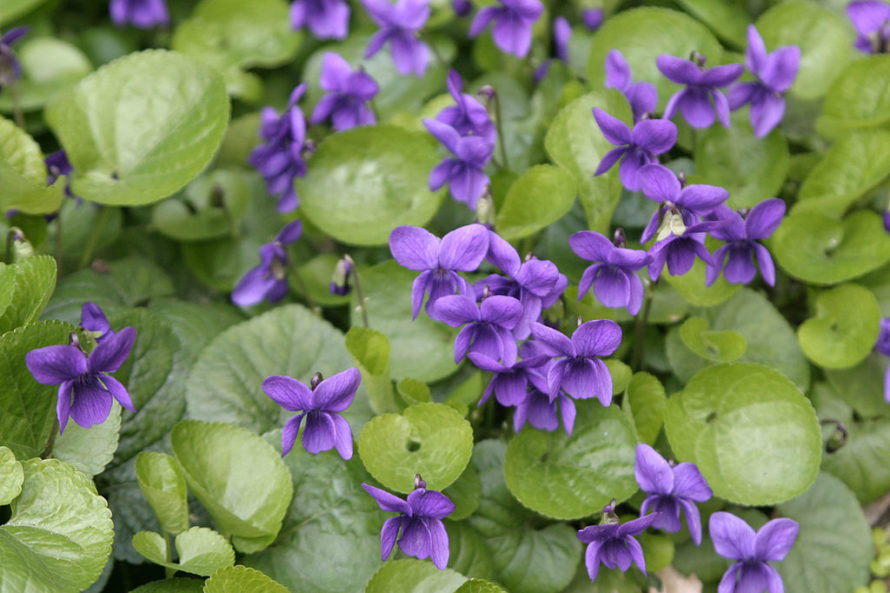Violets (Viola odorata), also known as sweet violets, English violets and common violets, have been a part of our lives for thousands of years. The humble flowers were featured in Greek mythology and used as the symbol of Athens. Shakespeare mentions them. The Victorians were wild about their scent.
Traditionally, violets have been used to treat respiratory ailments, skin disorders and insomnia. There is no scientific proof that violets provide any relief for these conditions. Nowadays, we use them for their scent in both perfumes and cosmetic fragrances. The leaves are also used in salads and the flowers are frequently sugared and used to decorate baked goods.
Native to Europe and Asia, they were introduced in North America by European colonists and have naturalized in the landscape. Violets were originally woodland plants but have spread beyond the forests to inhabit open areas such as shady lawns. They are frequently used as an underplanting for shrubbery and deciduous trees.
Violets are perennials that are hardy in zones 5 through 9. They have long taproots so they are drought tolerant. Mature plants are short, 4 to 6 inches tall, so they easily pass under a lawnmower to emerge unscathed. They spread prolifically, both by seed and by stolons which can spread up to 24 inches.
It’s easiest to grow violets from purchased plants, but if you want to grow them from seed, be warned that you will need fresh seed. The older the seed, the less likely it is to germinate. If you want to gather seed, you won’t find it after the initial blooms in the spring. Those flowers are sterile. The plants bloom again later in the summer. This second flush of flowers have no petals which is why we don’t see them. They self-pollinate to produce viable seed in small green pods which can be collected for the seed.
The seed will need to be cold stratified. Plant your seeds, lightly covered, in moist growing medium. Insert the container in a plastic bag and refrigerate for 4 weeks. After removing from your refrigerator, keep the container in a cool place, 41⁰F to 54⁰F until germination which should occur in 21 to 35 days.
Plant the resulting seedlings 4 to 6 inches apart in your garden after your last frost.
Alternatively, you can direct sow the seed in your garden in the fall or 4 to 6 weeks before your last frost date in the spring. The seeds should be no deeper than ½ inch. Thin the resulting seedlings to 4 to 6 inches apart.
Violets are most often bothered by slugs. They chew holes in the leaves. To keep slugs away from your plants, keep the area around them free of debris in which slugs can hide. Be careful when mulching around your plants. Never use more than 3 inches of mulch. Amounts higher than that can be used by slugs to also hide in.
You can also use diatomaceous earth or ground-up eggshells around your plants. Both have sharp edges that shred the undersides of slugs, killing them.

